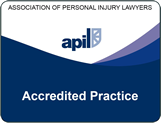Workplace health and safety is an essential aspect of modern employment. While many are aware of the immediate dangers posed by heavy machinery or hazardous materials, there exists a silent threat lurking within the confines of countless workplaces: occupational diseases. These insidious illnesses often go unnoticed until symptoms manifest, leaving workers grappling with the physical, emotional, and financial toll of their condition.
The current rate of occupational diseases in the UK is higher than pre-coronavirus levels. According to the HSE (Health and Safety Executive), roughly 1.8 million employees suffered from work-related ill health between 2022 -2023. 49% of cases were due to mental health conditions including depression, anxiety and stress. Whereas 27% of recorded cases were musculoskeletal disorders.
Workplace diseases encompass a diverse range of conditions, each influenced by the unique demands and hazards present in various industries. Depending on your occupation and workplace environment, you may encounter a range of health risks, from respiratory ailments in manufacturing settings to skin conditions in healthcare facilities.
Types of Occupational Disease
Asbestosis
Asbestosis is a chronic lung condition caused by prolonged exposure to asbestos fibres. It primarily affects the lungs, leading to scarring and inflammation that can impair breathing and lung function over time. Symptoms may include shortness of breath, persistent coughing, and chest pain.
Those working in industries like construction (particularly installing insulation), oil refineries and textiles are heavily affected by asbestosis. Although the use of asbestos has declined significantly, individuals exposed to asbestos in the past remain at risk of developing asbestosis, highlighting the importance of awareness and preventive measures in occupational settings.
Mesothelioma
Mesothelioma, a cancer also primarily linked to asbestos exposure, develops in the protective lining of organs, such as the lungs or abdomen. Its onset often goes unnoticed, not manifesting until several decades post-exposure.
Regrettably, mesothelioma carries a bleak prognosis, with most patients surviving less than a year post-diagnosis. Despite treatment advancements, including surgery and chemotherapy, its fatality rate remains high.
Hand Arm Vibration (HAVS)
Hand-arm vibration syndrome (HAVS), also known as vibration white finger, is a condition that arises from prolonged use of vibrating hand-held tools or machinery. The continuous exposure to vibration can damage the nerves, blood vessels, and muscles in the hand and arm, leading to various symptoms.
These symptoms may include numbness, tingling, and pain in the fingers, reduced grip strength, and loss of dexterity. In severe cases, the affected fingers may turn white or blue when exposed to cold temperatures. HAVS can significantly impact a person’s ability to perform manual tasks, affecting their work performance and overall quality of life.
Silicosis
Silicosis is a long-term lung condition caused by inhaling crystalline silica dust over a prolonged period. When silica dust is inhaled, it can cause inflammation and scarring in the lungs, leading to symptoms such as persistent coughing, shortness of breath, weakness and tiredness.
Silicosis is considered an occupational lung disease, primarily affecting individuals who work in occupations where exposure to silica dust is common. This dust can be found in industries such as mining, quarrying, and construction, where materials like sand, rock, and granite are processed.
Dermatitis
Dermatitis, a common occupational disease, is a skin condition that manifests in various forms, including irritant contact dermatitis (ICD) and allergic contact dermatitis (ACD). Dermatitis is a skin condition characterised by inflammation and irritation, often leading to severe symptoms such as redness, itching, swelling, and blistering of the skin. These symptoms can cause significant discomfort and distress to individuals affected by the condition.
Industries such as cleaning, healthcare, construction, and hairdressing pose heightened risks due to frequent contact with chemicals, detergents, and other irritants. Moreover, prolonged exposure to wet conditions, friction, and inadequate skin protection exacerbates the severity of dermatitis symptoms.
Occupational Disease and Employer’s Liability
Employers have a duty of care to provide a safe working environment and protect employees from foreseeable risks, including exposure to hazardous substances or conditions that could lead to employees suffering from occupational diseases.
Determining liability requires thorough investigation and evidence gathering to demonstrate negligence or breach of duty on the part of the employer. Factors such as failure to implement adequate safety measures, lack of training, or inadequate supervision may contribute to liability in such cases. Employers must also adhere to relevant health and safety regulations and regularly assess workplace risks to prevent work-related ill health.
If an employee suffers with an occupational disease as a direct result of their employer’s negligence, the employee may have grounds to pursue a compensation claim against their employer for breach of duty of care. Legal proceedings may involve gathering evidence, such as medical records, witness statements, and documentation of workplace conditions, to support the claim. Through legal action, injured employees can seek financial compensation for their losses, including medical expenses and lost wages.
Trust Stonehewer Moss Solicitors
Stonehewer Moss Solicitors are a specialist personal injury law firm recognised by the Association of Personal Injury Law (APIL) based in the North West of England. Opting for an accredited firm ensures that your case is in capable hands, managed by professional and knowledgeable, expert injury solicitors.
With over two decades of dedicated experience in handling occupational disease claims, Stonehewer Moss comprehends the intricacies and hurdles involved in such cases, offering unwavering support throughout the process.
To learn more about making a workplace disease claim, call 01606 872200 and speak to a member of our team today, or request a call back using the link or form below.
Talk to our claims solicitor
Call us on freephone 0800 434 6544 or 01606 87 22 00
Email us at info@stonehewermoss.co.uk


